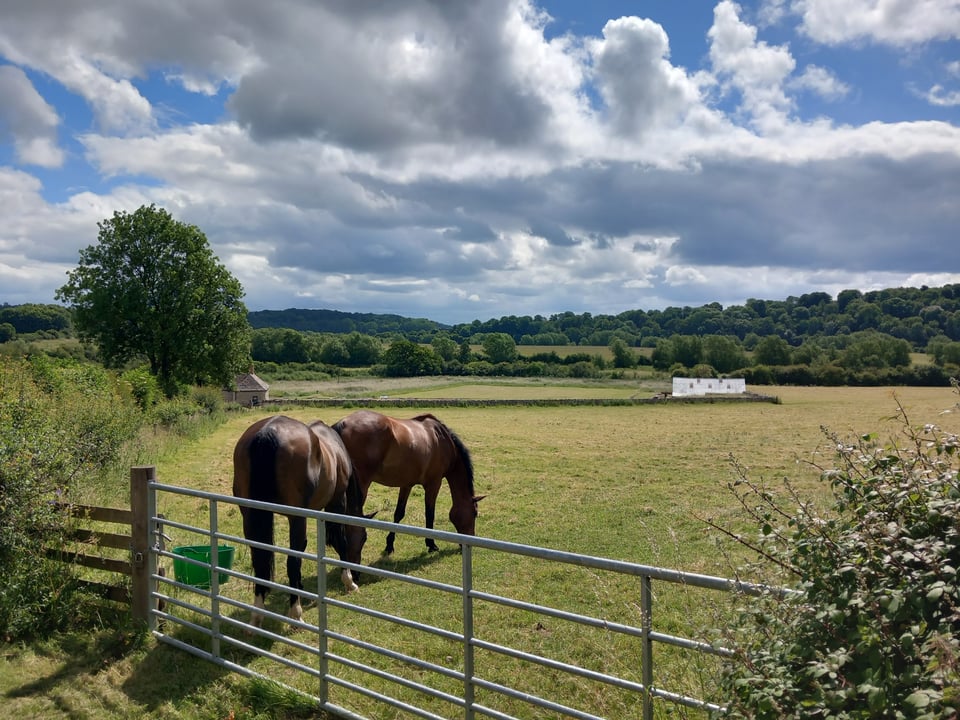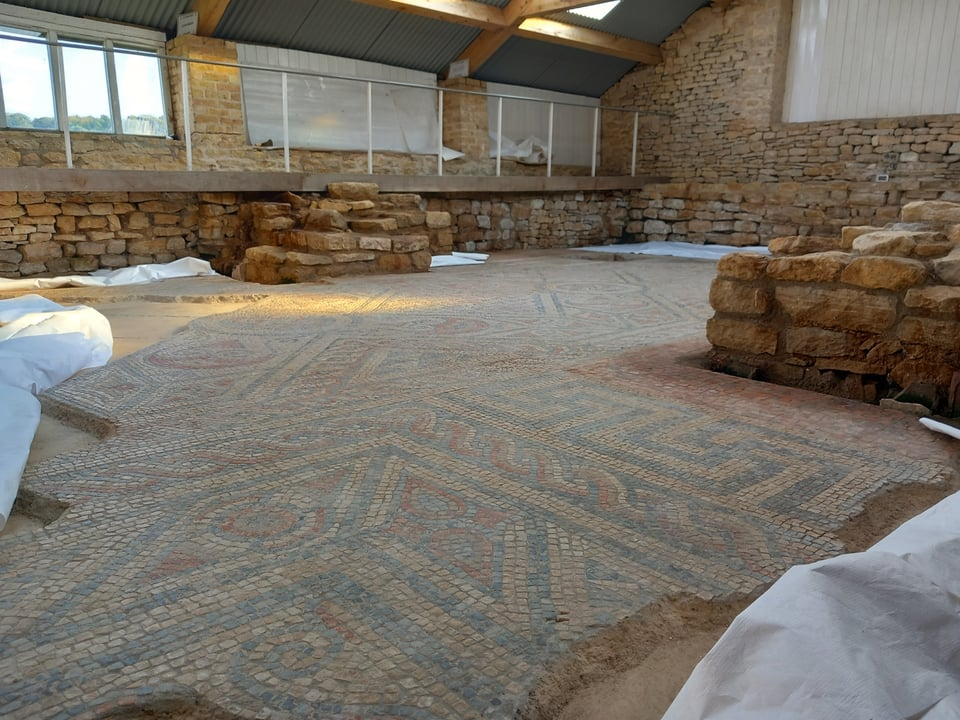A Long Time Ago... with Harvey Hamer
Hello there.
Welcome to A Long Time Ago… the fortnightly series where I ask guests to share their favourite Star Wars story and historical site. This started as a tie-in to my first piece of published writing, the article ART WARS for Star Wars Insider #226. The whole archive of my exploration of fourteen ancient art sites and every Star Wars story on my shelves can be found here.
This Sunday marks over a year of A Long Time Ago… in its two forms (and so two years since my Star Wars writing journey began at Celebration 2023!). The year’s gone pretty quickly, and I’m so thankful to all the guests who have contributed to the series, propelling it beyond my initial fourteen.
There’s some important news at the end of this post, but today we’re celebrating (tying in nicely to his year’s Star Wars Celebration in Japan!) in a cheaty manner and I’m going to share my favourites with you all. Since it’s my newsletter, I’m allowing myself two picks for each. (They may come as no surprise. (I’ll try to be brief.))
Today, I hand over to me!
I hope you all know who I am…
In A Galaxy Far, Far Away…
When I’m asked my favourite Star Wars movie or book etc., I usually find it hard to pick. I remember meeting Anthony Daniels, whose signature I based mine off, and he asked and I didn’t really know what to say. Well I’ve grown a lot since then, and while I’m no better at picking favourites, rather enjoying every entry in the whole tapestry timeline, my love of mythological storytelling and ancient history/prehistory has also grown.

The Mortis arc, episodes Overlords, Altar of Mortis and Ghosts of Mortis, is as mythological as you can get. Season 3 of The Clone Wars really amped up certain aspects of the 3D animated show, returning to threads from the previous two seasons and then in the second half producing some game-changing arcs for Star Wars going forwards, introducing the Nightsisters (more on them coming soon!), and of course the Ones, or Mortis gods as they’re referred to in Rebels.
Anyway, the three-episode arc sees the shows three main protagonists, the Jedi Anakin Skywalker, Obi-Wan Kenobi and Ahsoka Tano on an adventure way beyond clones and droids and warring factions.
They encounter an octahedral monolith in space, which brings them to a dreamlike world known as Mortis, with aspects outside of time, gravity… it’s a mystical place inhabited by three near-immortal beings which reflect aspects of The Force: The Daughter, representing the Light; The Son, the Dark and The Father, who holds his children in Balance. The episodes deal with the nature of the Force, the universe, the fate of both the three Jedi (especially the Chosen One, Anakin) and the three aspects. A lot of foreshadowing, metaphor and symbolism, visions and magical abilities, a dagger and Lord of the Rings-like towers.
I could probably write a whole book on the subject, and share countless screenshots, but it’s probably best if you just watch the arc if you can.
Whenever I first watched the arc as a child, I think it fundamentally changed the way I saw Star Wars and truly appreciated the concept of prophecies and chosen ones, fate and the aspects of our nature. Of course, it wasn’t until re-watching in 2019, and having a nightmare with a crow-monster reminiscent of The Son in his dark tower, that I truly appreciated everything the arc was symbolising, and when its philosophy and aesthetics then greatly influenced my own fiction (Children of Shadows), based on that Mortis nightmare and more.

My second choice comes from the second animated Star Wars show, Rebels. But this time, if I may be so bold, I’m choosing the whole season. The season starts with two amazing two-parters but then launches into the most serialised Star Wars has been, focussing completely on the Imperial occupation, and the mystical secrets of Lothal, the planet where the show started.
We re-watched this one before Ahsoka aired, knowing that the show was continuing the story from where we leave this show’s characters at the end of the season. Watching it through that time, though, I appreciated and knew so much more about potential prehistoric art and beliefs due to cave visits and research for my fiction. Watching it through was solidifying what had already been written as a sample article and pitch for Star Wars Insider, comparing the art and myths of Star Wars with our own past.
But even beyond the magical wolves, ancient art of the Mortis trinity, portals to a time-removed World Between Worlds which also heavily influenced my writing, the journey the Rebels crew take throughout the season as characters is extraordinary. It’s some of the best storytelling in Star Wars and in general, tying everything up so neatly and so emotionally. Something best experienced fully rather than spoiled here.
While The Clone Wars was my childhood, there’s something really mythical about this season of Rebels, harkening back not just to our earliest written myths but to those painted on stone tens of thousands of years ago that defy deciphering. Which (prehistorically) links nicely to…
In Trottiscliffe, Kent, United Kingdom…

Now, it was a tough choice, hence the two choices still. I could’ve gone with Lascaux cave, or somewhere on the Isles of Scilly or Medinet Habu or… well, countless other sites that I have a personal connection to, through my stories or lived experience. Coldrum Long Barrow, which isn’t really a long barrow, is a site that meets both criteria and more, because it’s in the village on the North Downs where I went to primary school. It’s an incredibly important location in my novel when I realised in 2021 the story my ten-year-old self was telling was really set in a version of there.
I of course researched it more when first properly adding it into Children of Shadows in ‘21, but it was only after meeting an archaeologist at Stonehenge who had fully studied the site, did I realise its true nature and importance, beyond what the limited sign or Wikipedia page says, or the fallen sarsens of this chambered tomb which were also fun to hop across as a child.
Part of the Medway Megaliths, this tomb is a thousand years older than Stonehenge, and I may be misremembering, but I think it’s even the oldest dateable megalithic(/Neolithic) burial in the UK, with skeletons from 40th-39th century BCE - and I played on there after school! It may even be that the river Medway was the way (ha!) that Neolithic culture, or this certain Kentish style of it before it diversified or emerged in other locations, came across from mainland Europe. Coldrum was in use for hundreds of years.
It began as a large square kist with one layer of people which was infilled, then a second layer was placed on top, before a full mound sealed the open cairn structure. I’d always pictured the structure, certainly seeming more rectangular with fifty odd stones around, to have been more like West Kennet Long Barrow with a long chamber, but that was not the case! Coldrum was also heavily modified and disturbed from the Medieval onwards, complicating the natural and artificial terrace of the structure, its inner platforms with the pottery fragments, flint and skeletons of twenty-odd individuals and it upright stones.

In North Leigh, Oxfordshire, United Kingdom…

Yep, I felt I had to choose the wonderful site where I volunteer. Of course, I first visited, researched and wrote about the Romano-British villa site in 2023, before the opportunity to volunteer there even arose.
Near North Leigh, there’s a wonderful valley where the shady river Evenlode meanders. Habitation of the site began with an Iron Age settlement, before becoming a more Roman hall structure, and dwelling alongside it. A bath house sprung up at a different angle, the main building grew, all linked by a corridor. Wings shot out from either end (meaning the courtyard isn’t really a square, as the one wing followed the line of the bathhouse), and eventually a garden was surrounded by a a colonnade and closed in by a fourth wall with a gatehouse.
The original section was completely remodelled into one long range, the original bathhouse destroyed, and wonderful mosaics, from basic colours and chequered surfaces to complicated geometric designs were completed. And of course all the walls and ceilings were plastered in bright colours, floral motifs and perhaps many more scenes we’ll never know. This development went on for three hundred years!
As a prospering farm estate, the main stone structure of the villa seemed to have a summer wing with a walk-in entranceway, a winter wing with full hypocaust heating (both with baths - perhaps for multiple families) then a third wing with the kitchen, forge and other service quarters where workers/slaves would do their duties, and also had their own baths. Stables and more farm structures sprung off the side of this wing, including a large aisled barn. Sheep were probably their main money makers, but other animals, as well as crops, and a vineyard were kept. The track to the estate ran down the hill through the farm structures to the gate, and also over the meanders of the Evenlode to Akeman street between St. Albans and Cirencester (where the mosaic schools which completed the different ranges were, between the 2nd and 4th centuries!). There may have been a full dock set up, or even a canal with a mill, as evidenced by aerial photography and scans, which also show boundary ditches and walls.
The site was fully uncovered again over three years in the early 1800s after the local priest, walking his dog, noticed some ruins. Sadly, over the course of those three years, though they were all documented (as were the remains of painted walls and ceilings found), all but the one room’s geometric mosaic were taken tesserae by tesserae. Which is why there’s a whole structure over the surviving triclinium, and a custodian’s cottage on site, in use till the 90s, and now ready to be used again for us volunteers!
More recent excavations and conservation work have also properly examined and reburied one wing and future-proofed the roof over the mosaic and two wings left uncovered, as well as yielding interesting finds like a whole forger’s kit hidden in the remodelled baths and quarries in the hills.
I could go on for ages, but you can always find more info about the site in the archives of my newsletter!

Thank you so much for reading!
So, I mentioned some important news in the intro of this letter. This series isn’t ending, but I feel after a year it’s time to slow down from once every two weeks. It’s been wonderful hosting other writers’ works - being the first to read essays from writers I really admire! - and it’s given me more time for other writing as I’m only usually editing these into this format.
That said, the schedule’s going to change. It may move to once a month, or perhaps be sporadic. Frankly, it’s not that I’m running out of potential guests. It’s that I’m running out of steam contacting people, or mainly, checking in. I must’ve had about twenty yesses which have yet to get back, or some people which have read the message and not responded. I never like to feel like I’m bothering people, especially busy writers who have so many amazing and paid creative pursuits to put their words to.
So, yes, a schedule tbd. But don’t be sad. There are indeed still guests lined up, which I know will be contributing in the coming months, so subscribe today to discover the next guest and their picks!
Cheers,
Harvey